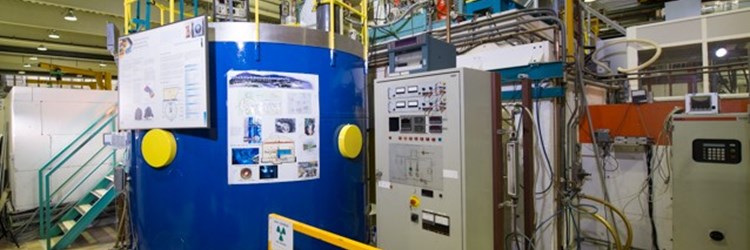

INSIDE@ILL is the Italian research platform composed by the CNR neutron experts belonging to the Operative Group in Grenoble. This CNR outstation is based at the Institute Laue Langevin and has the goal of supporting the ItaliaN ScIence and eDucation with nEutrons (INSIDE) at ILL.
The main purpose of INSIDE@ILL is to enlarge the Italian community of researchers using the neutron scattering technique by providing them with complementary powerful tools to the experimental methods they normally use to for their research. The objectives will be achieved through the following axes:
Administrative contact: Fabrizio La Manna, amm...@iom.cnr.it, ph. +33(0)47688 2962
The INSIDE members may help the users at different levels of an experimental project at the ILL. A first key task is to assist new users in preparing an experiment proposal to have reasonable probabilities to be selected providing efficient solutions to critical issues hindering the achievement of experiments. This consists of course in giving advice on the choice of the proper and more suitable instrument and/or technique to use and make them aware of the different possibilities available for the sample environment (cryostat, furnace, gas handling system, pressure cells); what kind of samples have to be prepared, how much time they need to ask for, what ancillary measurements they have to predict and so on and so forth. The INSIDE team may then provide help to the users during the experimental phase, or in the data reduction process, where advises about analysis data and related software can facilitate the users’ success and avoid difficulties. INSIDE@ILL will also gather groups working on the same theme to better exploit together the allocated beam-time or when feasible, establishing contacts with groups of new users having a similar scientific case. This is a need, which becomes critical today given the difficulty to achieve a successful proposal following the general reduction of the beamtime allocated to Italian proposals. A valuable privilege the INSIDE team can profit of to fulfill its goal, is the Italian dedicated access to the CRG (Collaborative Research Group) IN13 at ILL. IN13 is the high energy resolution backscattering spectrometer dedicated to the investigation of molecular dynamics particularly but not only in the fields of Physics, Biology, Chemistry and Cultural heritage.
The permanent presence of the INSIDE researchers on the ILL site can favor the realization of experiments especially in this unfortunate period when the mobility is jeopardized by the COVID19 outbreak. Together with experimental assistance, the INSIDE members may provide a support to the realization of the numerical simulations that are always more frequently needed to prepare experiments or interpret their results.
Experimental activity: the INSIDE@ILL project aims at providing collaborative opportunities in a wide scientific field including fundamental physics, biophysics, chemistry, cultural heritage, health and food. The scattering techniques we currently use allow studying the structural and dynamical properties in a broad class of systems and in a wide range of thermodynamic conditions (temperature and pressure).
Biophysics: Biological molecules and macromolecules from standard to extreme conditions (nanoconfinement, radiation, high pressures and temperatures). Few examples are: polymer-protein interactions, protein folding/unfolding, bio-systems (molecules, polymers) for biotechnological applications, water dynamics in tissues (e.g. brain), artificial and physiological membranes, characterization of cells and ribosomes, properties of spores and seeds of agro-food interest.
Disordered systems: Simple, complex and confined liquids, (hydrogen-bonded) mixtures and aqueous systems, glasses, spin glasses, nanoparticles suspensions and hybrid systems (manipulation of acoustic properties).
Strongly electronic correlated systems: Ordering and structural studies of magnetic properties in strongly correlated systems, excitations in magnetic systems.
Nanomaterials: Nano-hydroxides of alkaline-earth metal in aqueous suspension for conservation science (i.e. deacidification) and care of wood and paper, and restoration and consolidation of stone assets). Structural study of nanoporosities and voids in ancient artefacts. Pigments. Micelles and surfactant systems. Carbon dots for catalysis.
Numerical techniques activity: The INSIDE@ILL team is familiar with most of the routines available at ILL to treat data from the majority of instruments, and has also developed programs for specific applications. Below a non exhaustive list: - Neutron data treatment and data analysis using standard packages such as LAMP, Mantid, DAVE, SASfit, Fullprofit and Esmeralda. - Methods for the analysis of INS, QENS data with a Bayesian approach implemented through Markov Chain Montecarlo Methods (MCMC) possibly integrated with a Reversible Jump (RJ) algorithm. - Programs for the reduction and data analysis of low angle measurements (Saswiev). Multiple scattering calculations, molecular dynamics simulation, ab initio calculations and introduction to retracing method (MacStas).